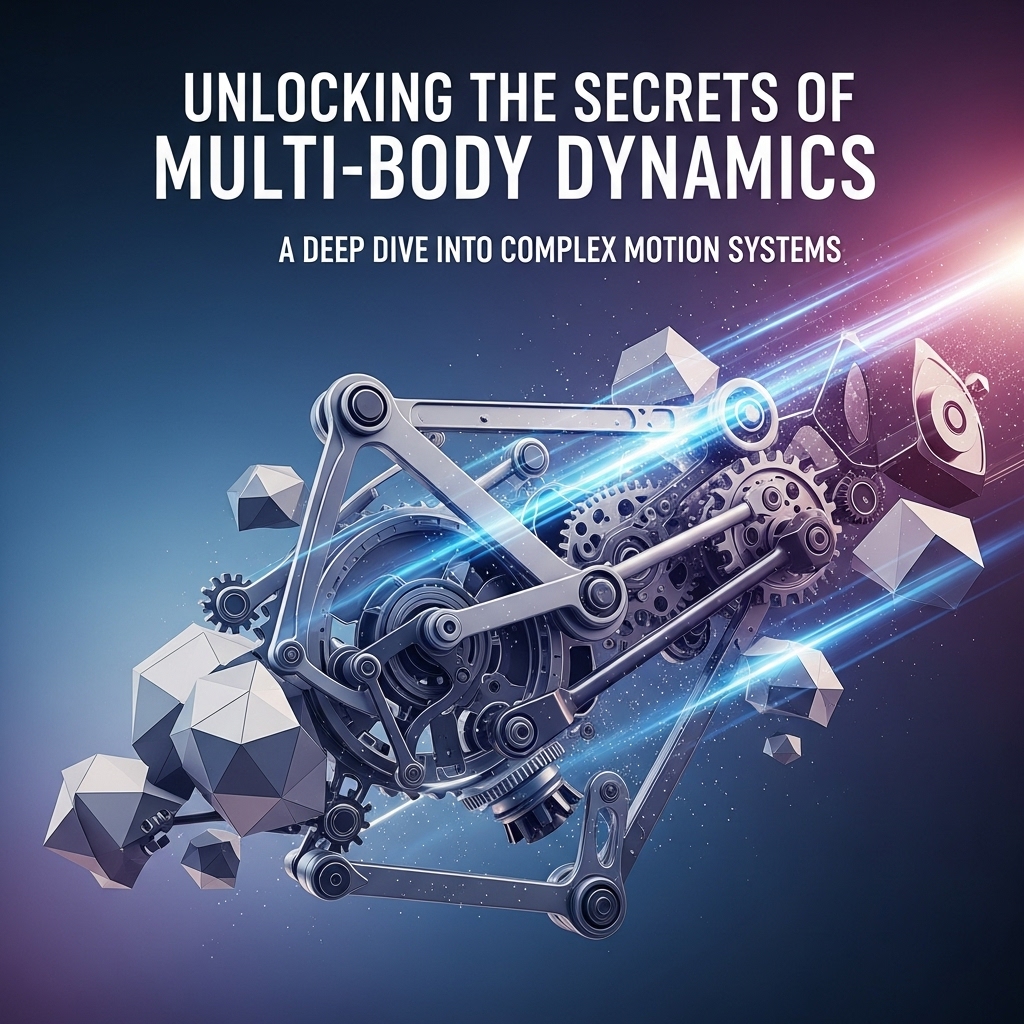
Introduction to Multi-Body Dynamics
Multi-body dynamics is a branch of physics and engineering that deals with the study of the motion of multiple objects that interact with each other through forces, constraints, and other physical phenomena. This field is crucial in understanding and analyzing complex systems, such as robotic arms, vehicles, and even the human body. The behavior of these systems cannot be predicted by simply looking at the individual components; instead, the interactions between them must be taken into account. In this article, we will delve into the world of multi-body dynamics, exploring its principles, applications, and the challenges associated with it.
Foundations of Multi-Body Dynamics
The foundation of multi-body dynamics lies in classical mechanics, particularly in Newton's laws of motion and the principles of kinematics. These laws describe how forces affect the motion of objects and how the motion of one object can influence the motion of another. In a multi-body system, each body can be subject to various forces, including external forces like gravity and friction, as well as internal forces that arise from the interactions between bodies. Understanding these forces and how they contribute to the overall motion of the system is key to analyzing multi-body dynamics.
A critical concept in multi-body dynamics is the degree of freedom, which refers to the number of independent parameters that define the configuration of a system. For example, a robotic arm with several joints has multiple degrees of freedom, each corresponding to the movement possible at each joint. Calculating the degrees of freedom is essential for determining the equations of motion for a multi-body system.
Mathematical Modeling in Multi-Body Dynamics
The mathematical modeling of multi-body systems involves formulating equations that describe the motion of each body and the interactions between them. This is typically achieved using Lagrangian mechanics or Newton-Euler methods. The Lagrangian approach focuses on the energy of the system, formulating equations based on the kinetic and potential energy of the bodies. The Newton-Euler method, on the other hand, directly applies Newton's laws to each body, considering the forces and moments acting on it.
These methods lead to a set of differential equations that describe the dynamics of the system. Solving these equations, often with the aid of computational tools, allows for the simulation and prediction of the system's behavior under various conditions. This is invaluable for design, optimization, and control of multi-body systems.
Applications of Multi-Body Dynamics
Multi-body dynamics has a wide range of applications across different fields. In robotics, understanding multi-body dynamics is crucial for the design and control of robotic systems, ensuring precise and stable movement. In the automotive industry, it is used to simulate the behavior of vehicles, including the suspension system, steering, and overall vehicle dynamics, to improve safety and performance.
In biomechanics, multi-body dynamics models are used to study the movement of the human body, helping in the understanding of injury mechanisms, the development of prosthetics, and the improvement of athletic performance. Additionally, in space exploration, multi-body dynamics is essential for the simulation and control of spacecraft, including the deployment of satellites and the interaction with celestial bodies.
Challenges in Multi-Body Dynamics
Despite its importance, multi-body dynamics poses several challenges, particularly in terms of complexity and computational intensity. As the number of bodies in a system increases, so does the complexity of the equations describing their motion. This can lead to significant computational demands, making real-time simulation and control difficult.
Another challenge is the modeling of contacts and impacts between bodies, which can be highly nonlinear and require sophisticated numerical methods to solve accurately. Furthermore, the presence of flexibility in the bodies or the inclusion of non-rigid components adds another layer of complexity, requiring the use of advanced finite element methods or multi-body dynamics software.
Tools and Software for Multi-Body Dynamics
To tackle the complexities of multi-body dynamics, various software tools and packages have been developed. These range from general-purpose programming languages like MATLAB and Python, which offer extensive libraries for numerical computation and simulation, to specialized software designed specifically for multi-body dynamics, such as ADAMS, Abaqus, and SIMPACK.
These tools provide functionalities for building models, solving equations of motion, and visualizing the results. They often include features for handling contacts, flexible bodies, and advanced numerical methods, making the analysis of complex multi-body systems more accessible and efficient.
Conclusion
In conclusion, multi-body dynamics is a rich and complex field that underlies many modern technologies and natural phenomena. From the motion of robotic systems to the behavior of the human body, understanding how multiple interacting bodies move and respond to forces is crucial for design, optimization, and control. While challenges exist, particularly in terms of complexity and computational demands, the development of sophisticated mathematical models and software tools has made it possible to analyze and simulate multi-body systems with high accuracy.
As technology continues to advance and our understanding of complex systems deepens, the importance of multi-body dynamics will only grow. Whether in the development of more efficient vehicles, the creation of advanced prosthetics, or the simulation of celestial mechanics, the principles of multi-body dynamics will play a pivotal role. By unlocking the secrets of multi-body dynamics, we can push the boundaries of what is possible in engineering, physics, and beyond.
